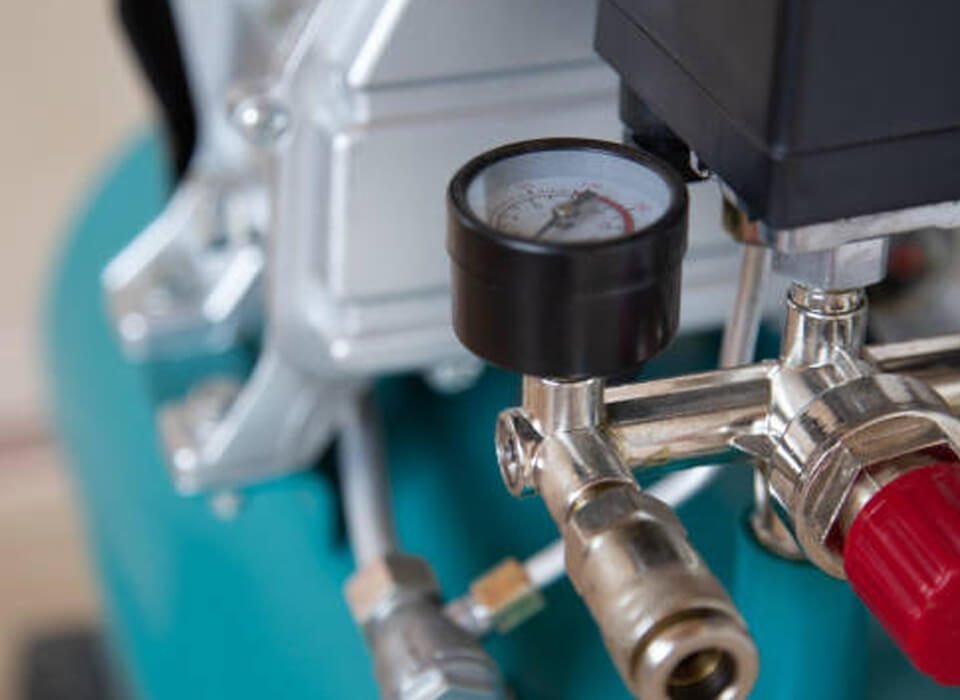An air compressor, like other machines, needs regular inspection. The moving parts of an air compressor are prone to wear and tear. Air compressor inspection can help you identify potential issues before they get worse. Timely handling of the reciprocating air compressor issues saves individuals from costly future repairs.
Table of Contents
How to Inspect Air Compressor
A well-maintained air compressor will have optimal performance and a longer lifespan. The compressor can also work for a long time with no downtime. Successful air compressor maintenance must begin with a productive inspection. If you make a mistake when inspecting an air compressor, its performance and lifespan get compromised.
Here is a guide on how to inspect an air compressor properly.
Read the Manual
Reading the manual is the number one step when inspecting an air compressor. The inspection needs of an air compressor differ from one model to the other. Manuals provide the key steps to follow during air compressor inspection. By reading the manual, a person will know the tips to prolong the lifespan of the air compressor.
The manual also indicates the necessary equipment needed to conduct an inspection.
Check Oil Levels of the Reciprocating Air Compressor
Oil is essential to running air compressors. It lubricates the rotors and offers a sealing, preventing air leakage. Oil is also necessary for cleaning dust and particles from the air passing through the filter. During air compressor inspection, you must pay attention to the oil levels. Air compressors have a dipstick or an indicator that monitors the oil’s level.
To check the oil level, first ensure the compressor is shut off and disconnected from the power source. The compressor needs to be on a flat even surface. Remove the cap, then inspect the oil for any debris or dust. The oil level should be no higher than the halfway point of the sight glass.
If the oil has contaminants, it needs changing before operation. Operators must use the oil specified in the manual when changing the oil. The wrong oil type can make the air compressor overheat and damage the rotor.
If the compressor’s oil consumption is higher than expected, it’s a sign of a potential problem. A plugged oil crankcase can drive oil consumption up in some cases.
Users should always check the inlet filter if the compressor gets too hot after turning it on. Discharge any dirt in the inlet filter and ensure lubricant is at the right level.
If you’re in need of a reliable and efficient oil-free air compressor rental, consider exploring our options and shop here for the best solution to your needs.
Inspect the Air Filter
Air contains millions of pollutants such as dust and dirt. Such pollutants can cause the air compressor to malfunction.
The contaminants can also inflict unnecessary wear and tear on air processors components. If the air filter is not functioning correctly, it forces the compressor to overwork.
Most manufacturers recommend changing air filters after 2000 operational hours. Environmental conditions such as high moisture affect the frequency of air filter change. High humidity calls for frequent air filter changes.
When inspecting the air filter, make sure the unit is off and set on level ground. The compressor pump needs to be cool. Take off the filter top and separate the filter cover from the filter base. Next, remove the element. Blow out any dust from the element. The element may need to be replaced if it is too dirty.
Finally, put the filter back together and secure it to the base.
Drain Moisture From the Tank
Air compressors have a tank where air and moisture collect when the compressor is in use. The tanks have one or two valves to drain the air and moisture. During an inspection, the air and moisture accumulated in the tanks need emptying.
The person involved must first disconnect the power source to drain the tank. Then incline the unit to allow the air to bleed from the tank. After the pressure drops, the valves can be fully opened to allow the tank to drain. When emptying the tank, one must open the valves slowly to prevent high-speed debris ejection.
Other inspection procedures include:
- Inspecting the belt guard
- Checking for unusual noises
- Tightening all fasteners and bolts
- Cleaning the fuel tank
- Cleaning heat exchangers
- Checking the operations of system controls
When to Perform General Maintenance
Some parts of a reciprocating air compressor need to be inspected and maintained daily, while others can be done weekly or monthly.
Check oil levels, check for leaks, drain tank water, and inspect belts daily. Check all filters weekly and replace or clean them when necessary. Monthly you should be checking the safety relief valve and the belts. Also, tighten bolts and check all connections for any leaks. Either annually or every 200 hours of use, service the engine or pump.
Reliable Reciprocating Air Compressor Dealer
Whether a person wants to inflate tires, spray paint, or pressure wash, the right air compressor is necessary. A suitable air compressor will have a long life span and better performance. Reciprocating air compressors offer more flexibility and high efficiency and produce high pressure.










